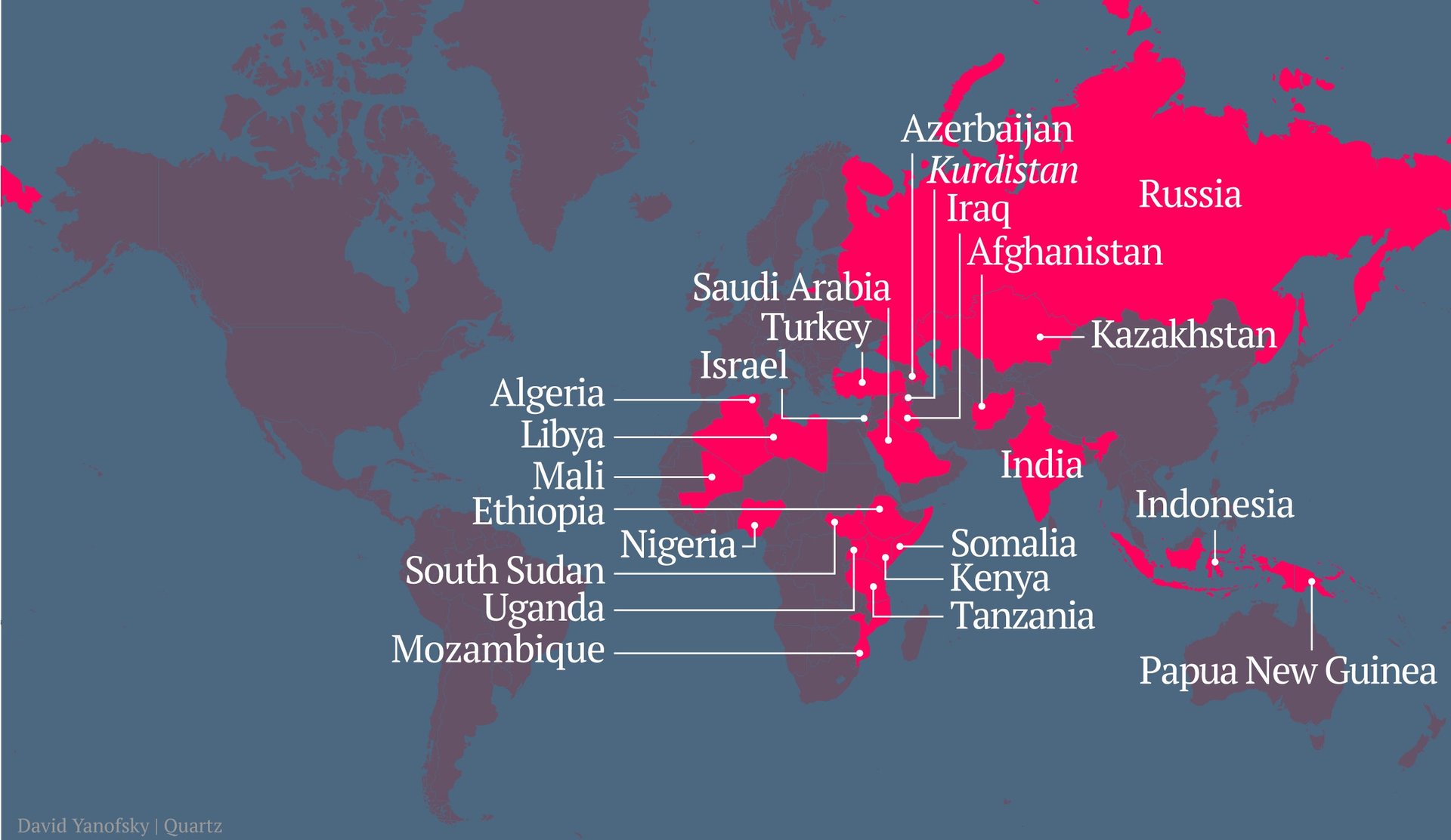24 resource-producing places that could be as vulnerable to attack as Algeria
The bare details of the Jan. 16 assault on Algeria’s Ain Amenas natural gas field speak the loudest: Launched from neighboring Mali, the attack appears at this point to have been supplied from Libya, and carried out by fighters from Algeria, Egypt, Mali, Mauritania, Niger and Tunisia. All of these nations are substantial producers of fossil fuels or minerals at installations that are themselves potential targets of attack.


The bare details of the Jan. 16 assault on Algeria’s Ain Amenas natural gas field speak the loudest: Launched from neighboring Mali, the attack appears at this point to have been supplied from Libya, and carried out by fighters from Algeria, Egypt, Mali, Mauritania, Niger and Tunisia. All of these nations are substantial producers of fossil fuels or minerals at installations that are themselves potential targets of attack.
As a result, both Algeria and Libya have beefed up security at all of their oil and gas installations, and some foreign oil companies have withdrawn staff from Algeria. But Ain Amenas dramatizes a little-noticed point that has sat in plain sight since the launch of modern jihadism in the 1980s: The most turbulent and remote parts of the world are dotted with potentially vulnerable oil, gas and mining installations. According to one terrorism database, oil employees at such installations were attacked on average three times a week in 2011.
Where are examples? Aramco analyst and blogger Matthew Hulbert mulled potential targets in the Persian Gulf. For the most impact, he wrote, attackers might first aim for Qatari liquefied natural gas and Saudi shipping and processing facilities, though in either case it would be hard to penetrate the defenses in place. Further away, Azerbaijan and Turkey host major oil and gas export pipelines; Papua New Guinea is set to become a large exporter of liquefied natural gas, as is Mozambique; and Afghanistan may be on the cusp of a mining boom. In all these cases, the countries themselves are home to militants, or are geographically nearby such groups. Shrewd resource-producing companies and the countries themselves will be re-examining their security at this moment.
The map above shows 24 countries and regions whose hydrocarbon or mining installations help make them potential targets of attack. To emphasize, Quartz is not suggesting that any of these countries will be attacked. As always, email me with any comments to [email protected].